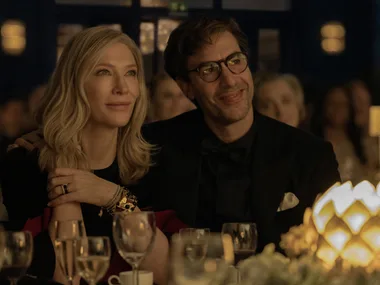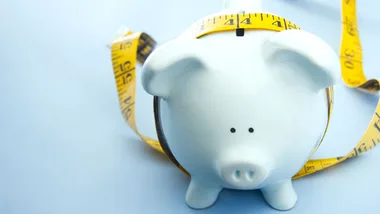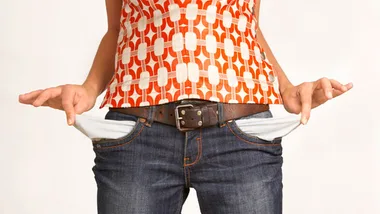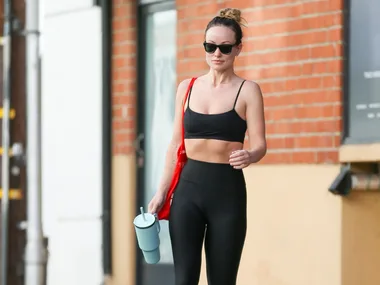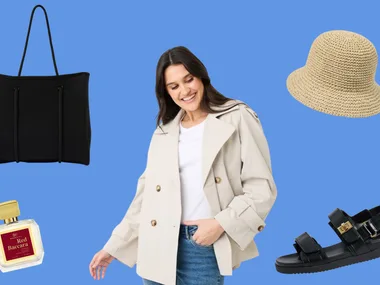Sarah Gale, international trends forecaster and one of the judge on hit television show, Project Runway walks us through the new seasons fashion trends and helps us decide what to stow and what to throw.
What fashion pieces should make up the basis of my wardrobe? What pieces does every woman need?
Jeans: These days denim jeans are varied in both leg widths and washes. I recommend three silhouettes as staples:
A slim straight leg (or skinny if you are comfortable with a true skinny): These are great to tuck into boots, or to wear with a high heel and they work for a dressed day occasion or to dress up for night.
A straight leg: These are great to wear with flats or over a boot. Dress them up or down and they will take you from day to night.
A bootleg: Although this style has been around for many years, it is still a favourite among a lot of woman and earns its place as a staple to wear over boots, a heel or with flats.
The washes: I recommend leaning towards the dark washes for the pair of denim that you would be more inclined to wear at night. Select a medium-blue wash for the pair you most likely wear during the day. Then choose a wash with some detail — either heavy sandblasting, abrasions or a very light coloured wash (depending on how adventurous you are with your denim) — for the pair that will take you from day to night.
Blazer: The return of the blazer this season will see it fast become (again) a staple in our wardrobe. A black blazer will take you from day to night and can be used to dress up denim or as an addition over a dress or pants. Wear a blazer over a knitted T-shirt top for casual style, or over a shirt or silk blouse for a dressier look.
LBD (little black dress): Every wardrobe needs a little black dress. Styles can vary and so can length. The most important aspect of this piece is that it represents who you are and you feel fabulous in it. It is the sort of piece that works as an assurance measure. You always know that if you are asked out on a last-minute appointment or dinner date, then you have just the dress.
Accessorising this dress becomes important. Change accessories around from gold to silver, chunky to fine to create different looks. A coloured shoe with a black dress is always a great statement, and if the style permits a scarf, either sequined or coloured will add flare and mix around the look of your dress. And don’t forget that changing the style of your hair and make-up will add a freshness to your look.
Knit tops: Either in soft drape viscose fabrications or soft cottons or silks, knit tops that can double up over jeans or more dress-orientated pants are a must for a woman’s wardrobe. Try and vary the colours so you look fresh and feel vibrant. Colour is so important and helps to lift our mood.
Boots: A great pair of black boots will always be of service in our wardrobe and are a definite staple; either short ankle boots or longer boots. The heel needs to be appropriate to your lifestyle.
What pieces should I throw and which should I stow for a later date?
I encourage people to clear out their wardrobe every six months (I do mine every three months). Holding on to “old feeling” clothes that feel outdated and the ones we simply don’t wear is like hanging on to old emotional baggage. It is amazing how much shifts in your life when you clear out your wardrobe. In general, get rid of anything that has you feeling like it is the old and has outdated you. Create a wardrobe that is reflective of the present you, and have each piece in it earn its place. Even if you haven’t worn something for a while, if you feel good in it, then keep it and try and restyle it with some of the more current pieces. If an item brings up unpleasant feelings or memories for you then toss it.
In relation to the current season, the following is a guideline of what to keep for the upcoming trends:
Keepers:
denim;
blazers;
trench coats;
dresses, maxis or short or shifts;
soft and floaty tops in either prints or plains;
architecturally inspired pieces, eg, with seam details, nips and tucks, pleats, etc;
anything you may have still hanging over from the ’80s (look out, it’s back!);
shorts in denim or cotton;
knitwear pieces to put over dresses; and
vests.
YOUR SAY: What are your favourite trends right now? How regularly do you clean out your wardrobe? Tell us below.
What should I look out for moving into spring and summer? What trends are on the way?
Toga party: This is a gorgeous story centred around the one-shoulder silhouette in both dresses and tops. Lots of silks and floaty fabrics will be found in this trend with white and vanilla being a backdrop for the beautifully colourful mid-tones. Think of salmon, blues, pinks and purples.
Jungle goddess: This story takes in a continuation of the tribal feel that we see most spring summers, yet incorporates lots of bright and mid-tone colours and the fabrics are far more floaty and lightweight than the usual structured fabrics we tend to see in this sort of story.
Silhouettes to look out for are the maxi dress, draped tops, embellished pieces with pewter and gold hardware. Stripes take on a new look within this story, uneven and irregular stripes being the most popular. Prints are also prevalent, touches of animal and floral and foliage scenes.
Eighties flavour: The ’80s has been on its way back for a few seasons, and this season we cannot avoid it in stores. There is a modernisation of this trend with the oversized block being tapered down slightly so as to be more flattering than its true ’80s counterpart. Bold bright colours incorporating lots of colour blocking will work well within this trend.
Body hugging (body con) silhouettes in dresses and skirts will be a popular feature of this trend, while layering is also a key feature within this story. The blazer has returned in this story and will be a major force over the next couple of seasons and the vest is also a great layering piece that continues to be strong.
How can I dress well during this tough economic climate?
Dressing well in this economic environment is about being selective with your purchases and your looks. Firstly, clear out your wardrobe and discover the gems you have in there. There will be plenty if you look hard enough. Colour is always a great addition to an outfit to bring it into a new season and having you feel fresh with your look.
Accessories are also another way that is economical to update an outfit, scarves, jewellery and belts can all create a new revitalised look. If you have a favourite jacket, try belting it for a different look. If you are shopping, try to experiment and go out of the box. Don’t buy any pieces that are already represented in your wardrobe; I call this “repeat offending”.
Make sure if you are purchasing new items, that they really earn their place in your wardrobe, and when you are in stores, picture how many different ways you can wear something with your already existing wardrobe pieces.
What has been your favourite part about working on Project Runway?
I am very fortunate to be working with some fabulously talented people on the show, from my fellow judges, Jayson Brunsdon and Kristy Hinze, to the producers and all the crew. We have a lot of fun and are all very passionate about the show. Having said that, though, one of my favourite parts of working on Project Runway is seeing the designers evolve.
We have such an incredibly talented group of designers this season, and I have a feeling that many careers are on the launching pad. I really like that. I have such a passion to help others to fulfil their dreams within the industry and I am very lucky to be in the position whereby through the show I can help effect that.
Which celebrity do you think has the best style?
Kate Moss has a great style; sophisticated with a touch of fun, yet looks effortless.
Who would you like to give a style make-over?
I do style makeovers for friends and I love it! First we start off clearing their wardrobes and tossing out the old them, which can feel quite scary to them at first, but once they get going it is fabulous. I then look at their current pieces and whether their wardrobes are balanced in relation to their lifestyle; most of the time they are not.
Most people wear only a small portion of their wardrobes and once we go through and restyle using the pieces they have, their faces start to come alive. So I love to give a style makeover to anyone who is willing to embrace change, because once you restyle your wardrobe, change in other parts of your life happens!
What’s the biggest fashion faux pas going around at the moment?
Currently, there is not one fashion faux pas that immediately springs to mind, so I would have to say not truly dressing as a reflection of yourself. It is so important to use dressing as an expression of who you are.
Whatever you wear, wear it with confidence and only wear what “feels” right for you. But remember to stretch your boundaries and allow yourself to expand in thoughts of what you “think” will suit you. Be adventurous and try on things you wouldn’t normally wear — you may just surprise yourself.
Watch Project Runway now on you 3 mobile from 50c or $2 per episode. Watch Project Runway episodes for free on 3 mobile as of 1 September until 16 October. See www.three.com.au/runway for more details.
YOUR SAY: What are your favourite trends right now? How regularly do you clean out your wardrobe? Tell us below.
Newsletter conversion description. Get the latest in your inbox.





















